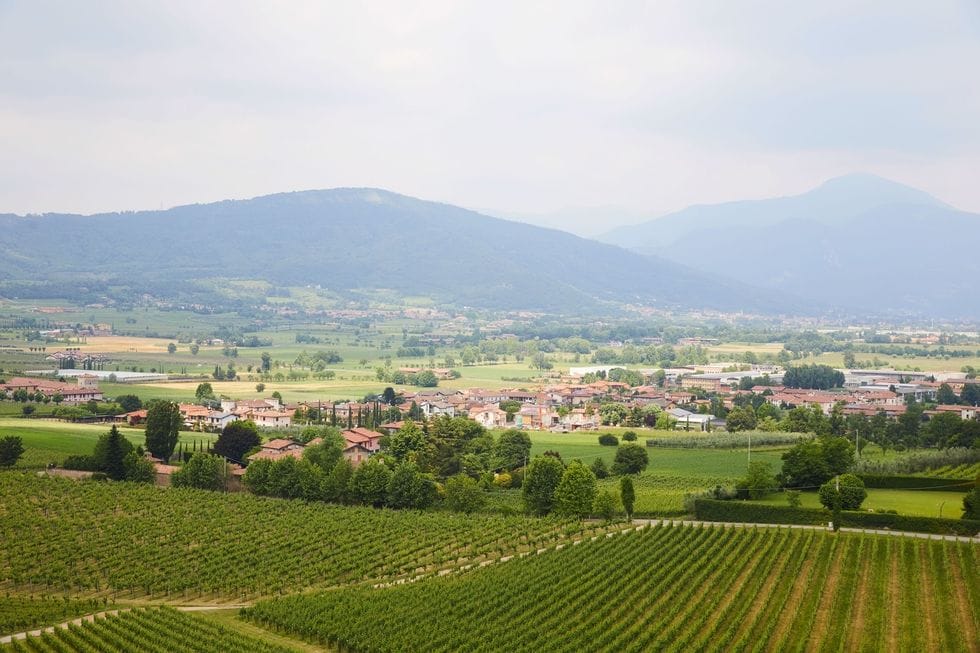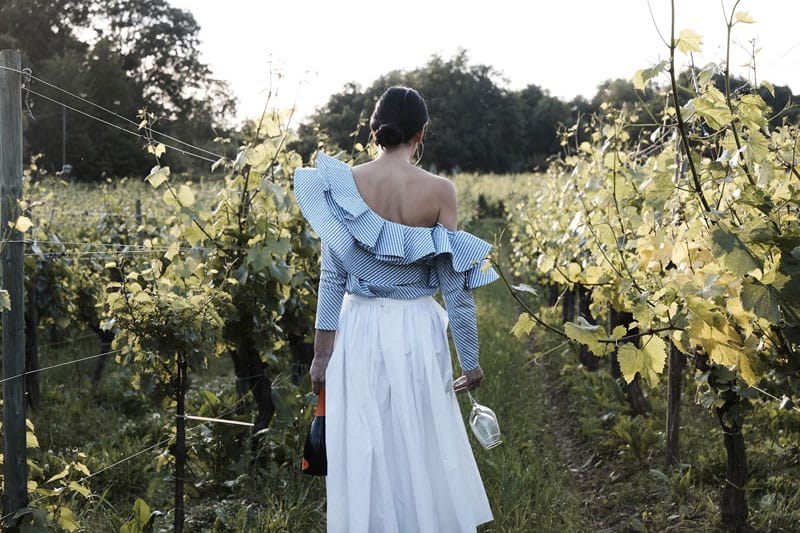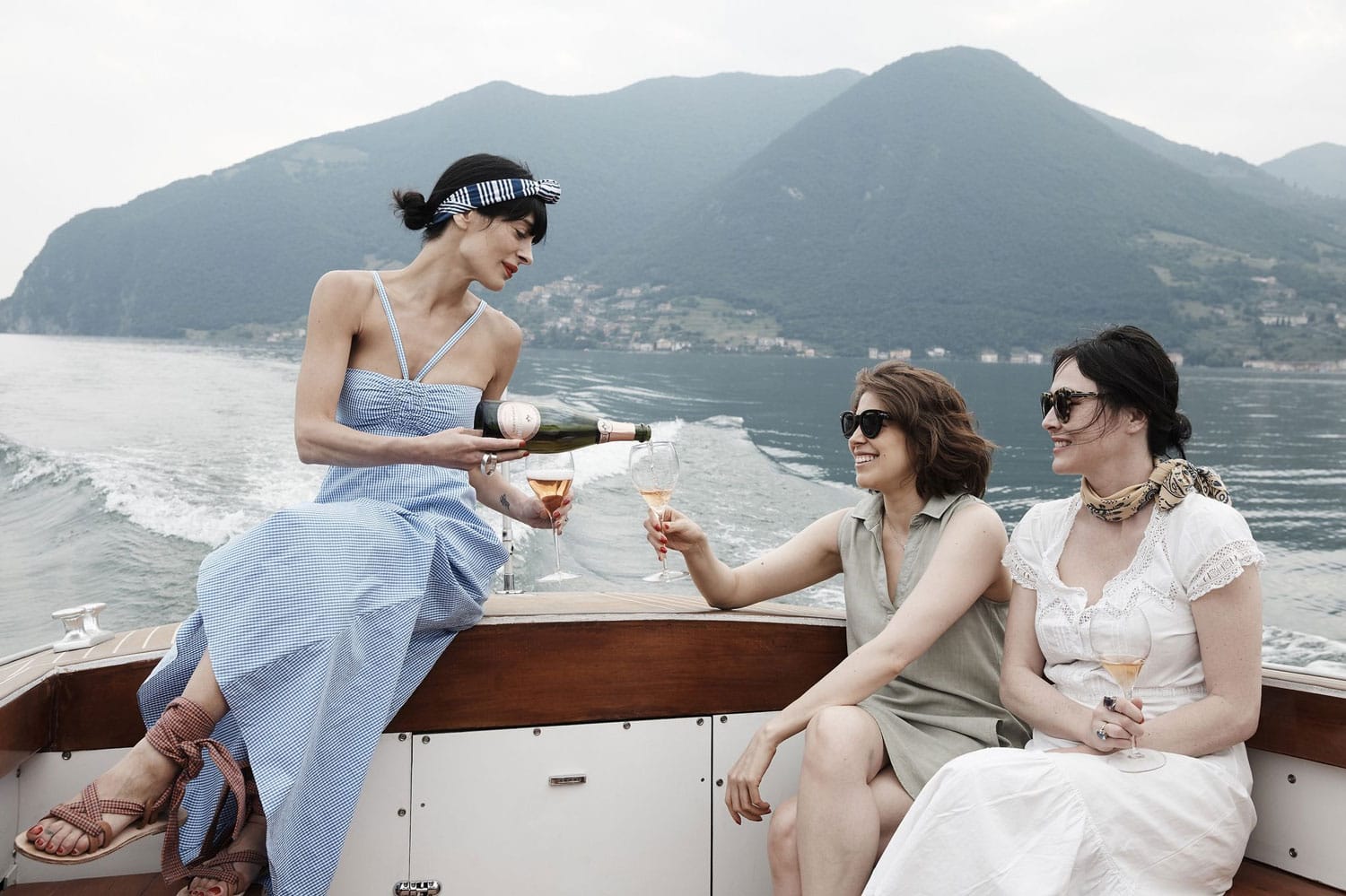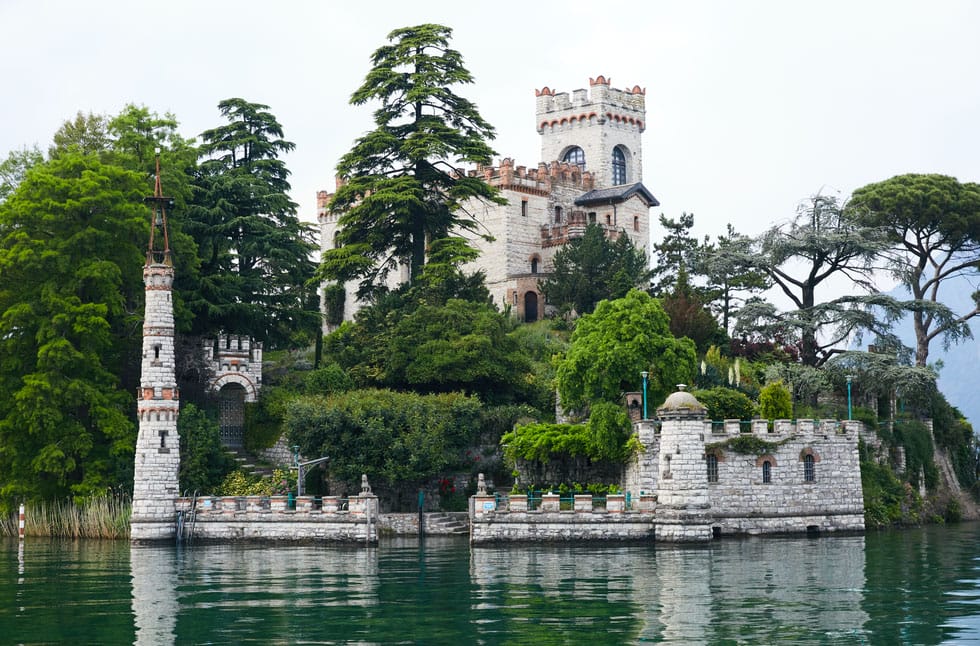
Image by Nicole Franzen
I have a deep love affair with Italy. The food, the passion, the singsong language that is music to my ears and the practice of slow living have a way of making me feel as though I can forget time. In Italy, endless hours melt away without worry over long meals filled with wine and laughter. The Italians, simply, know how to live.
I am fortunate to have traveled the country quite extensively over the years, but it was only last month that I encountered the small, bucolic wine region of Franciacorta, located just an hour north of Milano. One thing is for certain – I will surely return. Franciacorta is a place I will never forget…although the copious amount of bubbles I consumed may make my memories a tad fuzzier.

Image by Nicole Franzen
Truth be told, I traveled to Franciacorta thinking it was a type of wine. And while this is correct, much like Champagne, Franciacorta also describes the geographical region in which the wine is produced along with its style of production. Though I have worked with (and enjoyed nights sipping) Franciacorta before, I could not really grasp this concept until my maiden voyage.
My journey took me to the picturesque rolling foothills of the Alps, home to small-batch, family-run vineyard after vineyard, in the province of Brescia (Lombardy). To the west, huddled between wooded mountains, is little-known Lake Iseo, (a sister lake of Lake Como, the oft-vacationed spot of George and Amal).

Image by Nicole Franzen
As I came to discover, Lake Iseo is the antithesis of trendy and touristy. Here, in the small town surrounding the lake, I began my trip by lapping up the creamiest gelato and wandering the narrow streets. After a bit of eating and exploring, I hopped aboard a wooden boat for a ride around the lake. With my gaggle of ladies in tow and the Franciacorta flowing, we took in the sights. There was a 15th-century castle plopped in the glistening lake’s center. Young boys rowed past us, and a ray of light made its way through a blanket of dense clouds, with the silhouette of the mountains off in the distance. I couldn’t have dreamed up this setting in my wildest imagination.

Image by Nicole Franzen
As I drank up the beauty that is Franciacorta, I was also able to literally drink it in, sip by sip, while learning a ton about the careful winemaking that is unique to this small, 150-square-meter region. I visited about six winemakers, and while all were drastically different, they each shared the same respect and passion for the land and its history. The winemaking here has been around for centuries, but Franciacorta has only been flowing since the ‘70s. In the ‘90s, Franciacorta began to be regulated by The Consortium which ensures the winemakers adhere to Franciacorta’s rules for wine production and distribution. For one, the grapes must be hand-plucked from the winemaker’s own vineyard! The careful production rules and regulations paid off–since 1995, Franciacorta has been granted DOCG, the top wine classification.

Image by Nicole Franzen
There are currently 116 official winemakers, approved by The Consortium, who can call their product Franciacorta. To put things in perspective, Franciacorta produces less than 20 million bottles of sparkling wine per year, which is verysmall in quantity as compared to Champagne, which produces 350 million annually. With that said, smaller does not mean inferior. On the contrary, this burgeoning, unspoiled wine region is making quite the splash as of late– and it is building momentum as an elite wine paradise.

Image by Nicole Franzen
The wine regulations, which stem from the geography and natural characteristics of the area, contribute to Franciacorta’s unique sparkling wine profile. The 350-meter proximity to the sea provides clay to the soil, which give the wine body and structure. The runoff from the Alps’ glaciers gives the soil its minerality, and the limestone found in the region is what lends this varietal its aromatic, perfume-like qualities.
Franciacorta is Italy’s first wine to be produced in the classic “Champagne” method, meaning its second fermentation happens directly within the bottle. During this labor-intensive process, each and every bottle is turned slowly at a 45-degree angle so that the yeast gathers in the neck of the bottle and can be removed naturally.

Image by Nicole Franzen
The regulations that incorporate the fertile terrain of Lombardy, married with the winemaking process, are what make the flavor of Franciacorta so unique. The long aging process in the bottle (a minimum of 18 months) imbues it with richness, creaminess and complexity while also creating a softer acidity, masses of delicate bubbles and a dry finish. There are three grapes that make up the blend: Pinot Bianco, Chardonnay, and Pinot Nero. And, there is barely any sugar–the wine is very dry–but it is also elegant, with finer bubbles than a classic champagne.
There is a strong sense of passion and pride held by Franciacorta winemakers. I visited Bellavista, Fratelli Berlucchi, Lantieri, Ronco Calino, Monte Rossa, and Corte Bianca, and each winemaker beamed about their own process. I had the opportunity to tour the facilities and sit with each vintner as we nibbled on cheese and charcuterie or rolled handmade ravioli. All the while, they shared tales of their high standards–the controlled temperature of the wine, their friendly approach to the environment and their clear respect for nature. There are no preservatives and no chemicals in this wine–many of these makers use only natural sulfur and copper to preserve the grapes. The T.L.C. here is extraordinary; they even tend to the vineyards twice a week as opposed to the standard once a month.
During my five-day stay, Franciacorta certainly revealed its abundant beauty. I spent my time visiting the immaculate vineyards and quaint wineries, bottles in hand and bubbles at my lips. I breathed in the intoxicating scent of jasmine as I feasted my eyes on 17th-century frescos at picturesque Medieval castles, Renaissance palaces, and Roman ruins. The heart of the region, simply, won my heart.

Image by Nicole Franzen
Athena Calderone’s Franciacorta Short List
L’Albereta Resort
L’Albereta Relais & Chateaux in Erbusco is a private, family-owned, luxury 5-star resort with impeccable design and service. It is set amongst the vineyards and features one of Henri Chenot’s two wellness spas in Italy, a sculpture garden and multiple on-site restaurants. Eateries include VistaLago Bistrò, which offers casual outdoor dining with a terrace overlooking Lake Iseo, and Leone Felice, the property’s upscale restaurant, helmed by Executive Chef Fabio Abbattista.
Fratelli Berlucci
Visit historic, family-run winery Fratelli Berlucchi and sample Casa delle Colonne brut, named after the family’s villa. This Borgonato outpost is at the forefront of new wine trends and sustainability, and it juxtaposes classic and modern architecture and winemaking. Inside the winery you’ll find ivy-covered walls, great rooms decorated in 15th-century frescos and cross-vaulted ceilings from the 12th century. Private tours are available, and you can book your visit in advance.
Ronco Calino
We visited the Ronco Calino winery in Torbiato di Adro and also attended a cooking class on site, where we whipped up homemade ravioli. The venue’s architecture stays true to the landscape it was built upon while process-wise, it adopts modern advances and winemaking techniques under the leadership of co-owner Lara Imberti Radici.

Image by Nicole Franzen
Monte Rossa
Housed in a villa amongst rolling greenery is the historic winery of Monte Rossa. The locale boasts a beautiful palace, draped with jasmine, built in 1400 and also features a grand staircase, which wa built in the 1700s. Adding to the romantic appeal, Monte Rossa counted Frank Sinatra as a fan!
Corte Bianca
Nestled in the heart of Franciacorta between the hills and the lake is Corte Bianca, an organic winery owned by architect and interior designer Marina Tonsi. Owing to its extensive rose gardens, Corte Bianca produces rose jam and honey, as well as its famed rosé wine. Our visit was quite the treat as the owners welcomed us into their exquisite home for lunch.
Due Colombe
Due Colombe is located in Borgonato inside a stone-clad, recently-renovated historic building. The locale is both casual and elegant, while still being traditional yet modern, and it offers creative cuisine by Chef Stefano Cerveni, who was awarded a Michelin star in 2008. Here, I indulged in a braised beef masterpiece that had been in the family for generations.
Barboglio de Gaioncelli
Behind a large, wrought-iron gate among 16th-century buildings and vineyards is restaurant Barboglio de Gaioncelli. The venue offers incredible views of the rolling hills in Franciacorta, and the decor, with its wood-beam ceilings and original stone walls, only adds to the serene, one-with-nature ambiance. The cuisine highlights local ingredients and traditions, but with innovative touches. One such dish–a creamy, Franciacorta-infused risotto.

Image by Nicole Franzen
Lake Iseo
Exploring magical Lake Iseo is an absolute must. First, acquaint yourself with the fishing culture. Take a taxi boat to the lakeshore of Siviano, on the island of Montisola, and visit the fishing net manufacturer. Bike to the fishing village of Peschiera Maraglio, and meet with slow food pioneer Mr. Fernando “Nando” Soardi in Carzano for an explanation of the sardine-drying process. By the end, you’ll be well-versed in the age-old tradition of sardine-catching and preserving. Apart from the fishing culture, be sure to visit Stazione di Paratico Sarnico–it is a flower shop, candy shop, cafe and bar all rolled into one! The hub is located in an old train station and is just oozing with charm.
For more from Athena Calderone go to eye-swoon.com.
This article originally appeared on Harper’s BAZAAR US.



